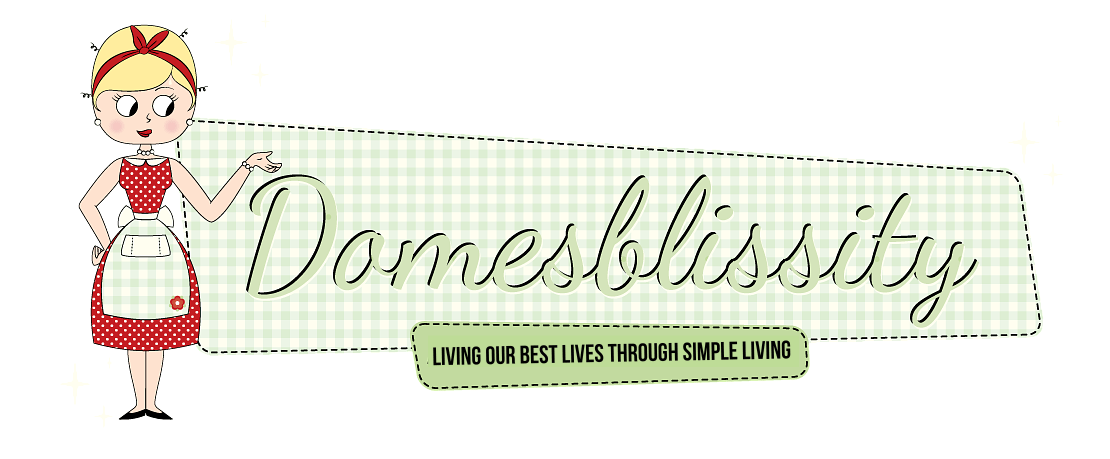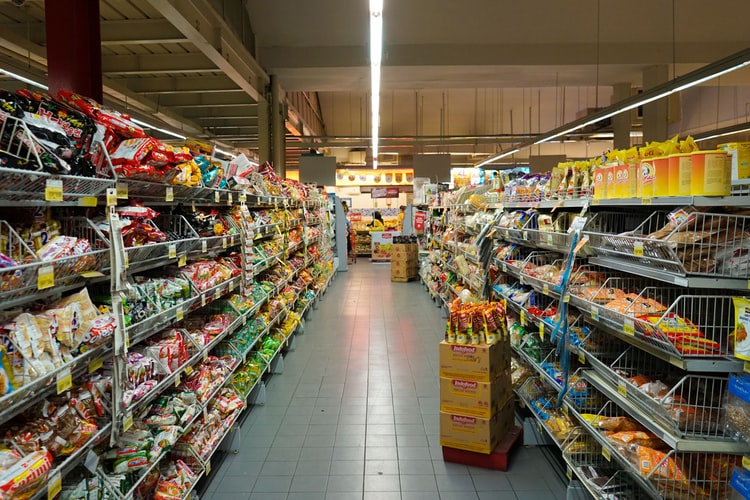So you’ve all heard the tips on how to save money doing a grocery shop. Don’t shop on an empty stomach, write a list and stick to it, etc etc. Well I’ve got a couple more that might change the way you think about grocery shopping and help you save even more money. Being in my late 40’s I’ve done quite a few grocery shops over the years and I get sick of the ‘games’ supermarkets try to play, thinking we are stupid. A lot of it comes down to us as consumers though and sticking to basic ingredients, avoiding ready made products and prepared meals. Here are 5 tips to help you organise your grocery shop and save.
 |
|
The red dots indicate supermarkets in the greater Brisbane area.
Please note, these 5 tips are something I follow. I have no less than about 30 different grocery stores within a 15 kilometre radius from home so I am spoilt for choice and convenience. For those who live hundreds of kilometres from the nearest grocery store and have to buy in bulk, some of these may not apply to you. Also, here in Australia we don’t have a coupon system like they do in the US so I’m not sure if these rules are applicable over there, but here goes.
1. Don’t look at the supermarket junk mailI used to look at the specials in the supermarket junk mail a while ago and then I stopped. From one of the top supermarket’s specials brochure this week, I actually counted the number of items that were advertised and, excluding toiletries, cleaning items, pet food, alcohol and miscellaneous items like plastic containers, mops, DVDs etc, there were 124 food items advertised. Out of that 124, there were only 19 items that I would actually buy to stock my basic fridge and pantry items. They were:
Out of the entire brochure, there were only 3 fresh produce items. Three! Can you believe it? The rest of the brochure was filled with ready made meals, sweets, snack items, soft drinks etc. Having a basic pantry/fridge/freezer list and keeping that stocked plus basing all of your meals around meat specials and seasonal produce is definitely the cheaper option.
Also, don’t buy a lot of a particular product just because it’s on special. I’m not a stockpiler. If you live close to supermarkets like I do and you regularly read the junk mail, you’ll find that the same store will have that exact same product on sale within a 4 week period. Between the 2 big supermarket chains in Australia, either one will have it on sale when the other doesn’t.
2. Look either side of the grocery item to find the cheaper optionI’ve noticed my local supermarkets have been putting lower priced brands and homebrands either side of the actual product now, instead of above or below. I usually buy the homebrand rice cakes but they are usually just to the right of the higher priced brands. Don’t get caught thinking they are out of stock and you’re forced to buy a more expensive brand.
3. Calculate the price per kilo to compare the cheaper buySometimes the packaged ham slices might be $3 for 100grams but calculated per kilo that’s $30! You should find it a lot cheaper in the delicatessen section or butcher shops sell ham on the bone at really good prices throughout the year for less than $10 per kilo.
4. Avoid buying sliced or grated cheesesThe amount of money you pay for something that can be done so simply at home is just outrageous. For example, my most recent supermarket brochure has a 200gm packet of grated cheese on special for $3.99. That comes to $19.95 per kilo. In the same brochure a block of Edam cheese from the deli is $14.99 per kilo. A saving of $5.00 per kilo and you can cut it into cubes for lunch boxes, slices for sandwiches or grated for sandwich melts. I usually buy a kilo block of plain cheddar for around $8 per kilo each time and get the food processor out and grate half and pop it in the freezer and use it frozen. Lasts for ages.
5. Avoid buying meat and produce from the supermarketI know it is a bit more inconvenient, especially if you’ve got to drag small children around and when my children were younger I did tend to buy everything at the one store. Now I’ve got a bit more time on my hands, I’ll get my fruit and vegetables online or at a nearby green grocer and buy my meat in bulk. (We don’t buy much meat anymore except for chicken, sausages and mince but it does work out a lot cheaper from a butcher or meat wholesaler.) Check the per kilo prices for meat and don’t rely on the supermarket’s word when they say that fruit and vegies are fresh. Most often they’re not.
 Like I said before, everyone’s different and shops a different way for convenience and necessity. Having a basic pantry list and keeping it topped up works out a lot cheaper for us which enables my standard grocery shop to be around $50 per week with fruit and vegies around $30 per fortnight and meat at around $30 for the month (for 1 adult and 2 school aged children). We bulk out our meat with lentils, chickpeas etc or have egg based dishes. I hope these tips help you in some way.
If you want to find out more about how I save money on groceries, check out the Shop Smart, Eat Well Program.
|





Anne once again I'm saying to myself this is pretty much what I do.
I too am lucky to have several stores to shop at within minutes. I shop for fruit and veg first then groceries second. I cook nearly all our meals from scratch. I rarely even use tinned soups for bases or jars. We eat well but I try to use herbs and spices for flavourings. We are also in the midst of trying to go Failsafe and removing any other products that unsuspectingly has additives and preservatives in. If people really stopped buying meal bases, convenient options in jars as well as junk , sugar cereals etc….supermarkets would be half the size they are now…l….it's ridiclous. Anyway it's late I'm ranting…..
Any advice concerning saving a bit of cash is grately appreciated. Especially with two little ones in tow…
I try to do the shooping 'trek' to save money and travel from store to store to find the best deals, but sometimes, I admit, I give into convienience and do all my shop in one store… though I never buy grated cheese!
Anne, awesome advice. I wish we had a butcher nearby but alas we don't. However, one of our grocery stores does have a butcher on site so that will have to do!
Hi Anne, We live in a small town about 30 mins outside Ipswich and 40 mins west of Beaudesert, so I shop fortnightly mainly at Aldi and top ups at Woolies. I do stockpile to a small extent, particularly on UHT milk, dry goods and tinned products. We have a fisho visit our town weekly and I buy fresh from him, and there are 3 butchers in town whom I support. For fresh f&V we grow about 70% of our own and buy the rest locally. We do have an IGA here that I use for specials and emergencies. Recently we had a big family gathering here and I was able to order my whole rump from the butcher and explain to him exactly how I wanted it sliced (thinner than in the supermarkets). We have the best of both worlds and shopping fortnightly makes me get organised. Your tips are a good reminder that we don't have to be slaves to the big retailers. Have a great weekend. Barb.
I agree with all the above tips and I follow them. The fruit shop is often cheaper for things like tinned tomatoe, tinned and drychick peas, lentils etc as well. My local fruit shop also has the cheapest wholemeal bread around as well.
Also if you do buy meat at the supermarket I always check the price of packaged chicken v chicken at the deli counter often chicken legs or wings will be $2.99kg from the deli but $5.99 in the tray in the meat section…big difference. Same for breasts and thighs. Why pay double for the same item in the same shop?
A gift for you, my dear friend!
http://4you-withlove.blogspot.com/2012/07/one-lovely-blog-award.html
Marilyn
You have some great tips! I've been lazy about my grocery shopping this summer and it does go better when I try to stay organized!
Before we moved to the country I used to shop around quite a bit. I also had a great supermarket, butcher, baker, and fruit shop all in a small complex so I could get everything there. I really miss that now, because I think supermarket produce and meat is not as good quality as the smaller independent shops, as well as more expensive
Great post, your experience sure has taught to be a wiser shopper. Hope more individuals can read this because they can surely benefit from your tips.
I so have to improve my shopping habits. I promise all because of you I WILL be s marter shopper. Thanks for the great tips hun xx
Great tips! I'm a shocker when it comes to shopping & definitely go for convenience over cheaper. Need to adopt some of your advice!! Thanks again for linking to Monday's Minutia xx
Great tips! I'd also add – don't always assume that the major supermarkets are cheaper. For the quality you receive you can quite often get a much better deal at a grocer or the local butcher. We actually get all of our fruit and veg now from a company called Andy & Ted's and for $38 we get 10 choices in a box delivered to us on Saturdays. I've priced it with our local Woolies & grocer and it is actually cheaper.
Exactly Anne! I am a massive stockpiler though, my omomatic doesn't come on special monthly, just quarterly when it is half price, then of course i buy enough for the three months or ten, same with diced tomatoes. I buy 64 cans when they are down to 69c a tin. Definately better quality fruit and veg and meat from green grocers and local butchers. Planning is the key and so is cooking from scratch. if you plan well, you don't need to make convenience trips…. unless of course it's wine and you didn't anticipate you'd drink so much or your friends would drink so much! xxx
How you, me and everyone else, can stop junk mail in it’s tracks.
http://you-shit-me.blogspot.com.au/2014/05/i-was-having-laugh-about-australia-post.html
It has the full link set near the bottom of the blog entry….
Australia Post – the Gestapo Email Co. Profiling Customers and Selling Email lists.
http://you-shit-me.blogspot.com.au/2013/12/australia-post-gestapo-email-co.html
The ethics of junk mail = they regard your home as their rubbish dump
http://you-shit-me.blogspot.com.au/2014/01/the-ethics-of-junk-mail-they-regard.html
Junk Mail – send it back from whence it came.
http://you-shit-me.blogspot.com.au/2014/01/junk-mail-send-it-back-from-whence-it.html
These include the graphics / labels, they print out nicely on A4 – and can be easily changed to the name and address of the manager / CEO of the postal system in your own country.
The reason why it works is the managers of the postal system have to wear the cost of transporting the junk mail back through their own networks and then recycling it themselves.
It shifts the cost from the consumer and the community back onto the junk mail industry, for the disposal of the junk mail, makes it rapidly uneconomical to send it in the first place.
One person does it, then 10 people do it, then 100 people do it, and then 1000, then 10,000, 100,000 and then a million, then 100 million…
You get the point.
This is how you shut down the unsolicited junk mail industry over night.
The last blog entry shows how I have been using them.
I’d appreciate it if you could share my idea around.